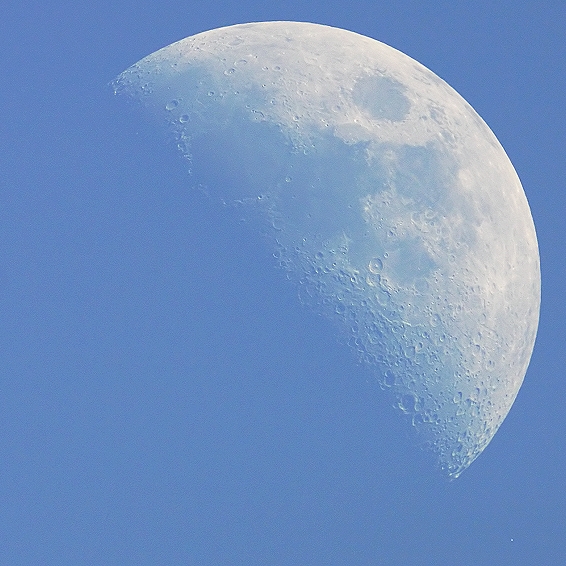
Although occultations can occur in a variety of ways, the heavenly body most often involved is our moon which inevitably
will occult (or eclipse) background stars, other planets as well as asteroids. The study of occultations is important, for
example, for the study of the moon's limb and its profile thanks to the grazing of lunar features such as mountains.
What is perhaps more interesting but not as frequent is occultations involving the moon and one of the planets. Typically
the planets involved are Venus, Mars, Jupiter and Saturn. Due to the great magnitude difference between the moon (any
phase) and any of these planets, the photography of these events can be challenging.
Without doubt, the most stunning example of the moon occulting another body is that involving the sun which, of course,
leads to a solar eclipse. This special example of an occultation is available
elsewhere on this site.
Note: Regulus is amongst the twenty-five brightest stars of the evening sky and the most
prominent member of the constellation of Leo. Studies have revealed Regulus (mag 1.40, spectral class B7) to have a
companion which is really a binary star (Regulus B: mag 8.0, spectral class K1; Regulus C: mag 13.0, spectral class M).
This binary system lies 4200 astronomical units away from Regulus A and has an orbital period of 1,000 years (see
here). Due to its great proximity to the
ecliptic, Regulus is frequently occulted by Selene.
Note: The human eye has a tendency to focus at a distance of 400 feet when focusing for
"infinity". As a result, many celestial objects which are visible during the day can become a challenge due to the eye's
default focusing for infinity. When the moon is near a celestial object of interest, however, the eye will easily focus
properly for "infinity" when looking at the moon and which in turn will permit for the easy identification of the
(neighbouring) celestial object of interest such as Regulus below (bottom right corner of the image).
|
Proper Star Name: Regulus Bayer Letter: á Leonis Tycho Catalog: TYC 833-1381-1 SAO Catalog: SAO 98967 Luminosity 126 + 5 x Sun Distance: 77.5 + 1.4 ly RA / Dec: 10h 08m 46s / +11° 55' 57" B-V Color Index: -0.033 mag Magnitude: 1.40 |
 |
Date: May 23, 2007 18:50 UT+3 Location: Athens, Greece Equipment: AP 160 f/7.5 StarFire EDF AP 1200GTO GEM Canon EOS 300d Baader IR-Cut Filter (1.25") Exposure: 1 x 1/1600 sec ISO 800 RAW Image Format 3072 x 2048 Image Size Manual Mode Software: Canon FileViewer V1.3.2 Photoshop CS2 Processing: RAW to TIFF (16-bit) Conv Resampling JPG Compression |